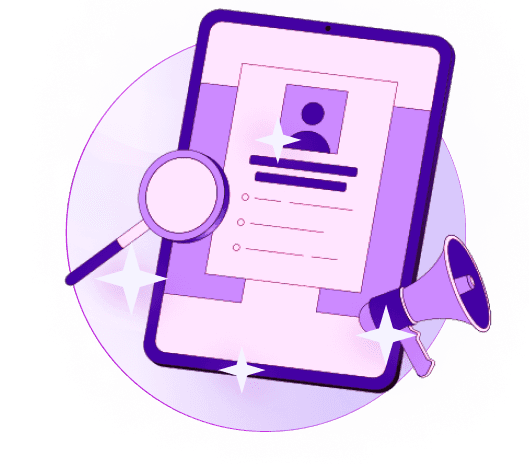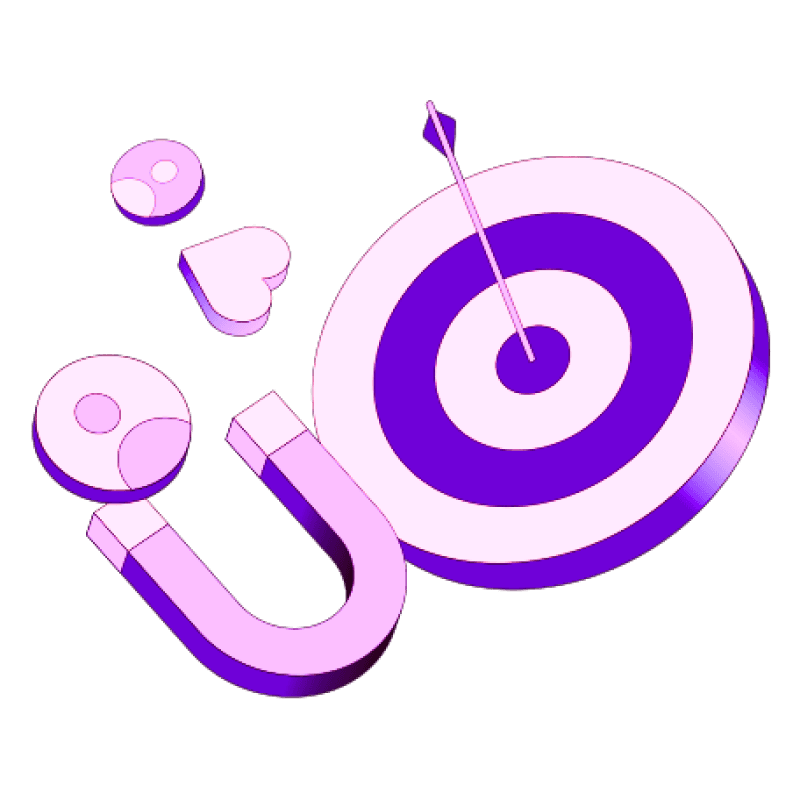Blogs
Articles

How to Master AI Lead Automation: A Step-by-Step Guide for Sales Teams (2025)
B2B organizations have embraced AI for sales at an impressive rate of 78%.
AI has revolutionized the sales landscape completely. Less than half of these companies use these AI tools to their full potential for better sales performance. The numbers tell an exciting story - the global market for sales and marketing AI automation will grow from $1.7 billion in 2023 to $9.5 billion by 2030.
AI lead automation changes how sales teams work today. Your sales team won't need to hunt for prospects or spend countless hours on data entry anymore. AI lead generation tools can find quality leads by analyzing behavior, intent signals, and firmographics from verified data sources. These AI tools boost productivity, make forecasting better, enable smart prospecting, and create personalized communication.
This piece will guide you through everything about adding AI lead automation to your sales process. We have practical strategies ready for you - whether you're new to AI or want to make your current setup better. These strategies will boost your lead generation efforts in 2025 and beyond.
What is AI Lead Automation and Why It Matters?
AI-led automation has created a major change in how sales teams identify and convert prospects. It applies artificial intelligence to improve the entire lead generation process. The process spans from finding potential customers to qualifying and nurturing them through the sales pipeline.
Understanding AI in sales workflows
AI has revolutionized sales workflows through machine learning, natural language processing, and predictive analytics that handle routine tasks with precision. Sales professionals save up to 2 hours and 15 minutes daily with AI automation tools. This allows them to build relationships instead of doing administrative work. The results speak for themselves - 80% of sellers who exceeded 150% of quota use AI sales tech at least once a week. These tools automate data entry, lead qualification, and follow-ups that used to take up valuable selling time.
How AI lead gen differs from traditional methods
Traditional lead generation depends on broad approaches like cold calling, manual research, and generic outreach. These methods take too much time and rarely convert well. AI lead generation uses data to target prospects with remarkable precision. AI systems analyze behavior patterns, intent signals, and firmographic data to find high-potential prospects instead of casting wide nets.
The systems can personalize outreach at scale so each interaction appeals to the recipient's specific needs. Research shows businesses using AI-driven personalization in lead generation achieved a 10-20% increase in sales.
The rise of AI sales tools in 2025
AI sales tools are growing faster than ever. By 2027, 95% of seller research workflows will start with AI, up from less than 20% in 2024. About 92% of companies plan to increase their AI investments over the next three years. The year 2025 stands out because of the move toward unified AI platforms that merge with sales processes rather than disconnected point solutions.
Agentic AI—autonomous software entities that can notice, decide, and act within digital environments—marks a breakthrough in sales technology. Yes, it is significant that 87% of sales leaders report their CEOs push to implement generative AI. The focus now lies on how to maximize these tools rather than whether to adopt them.
Step-by-Step: How to Implement AI for Lead Generation
AI lead automation builds on your existing sales processes and needs a step-by-step approach. Here's how you can break down the implementation into simple steps.
Step 1: Audit your current lead gen system
Start with a full picture of your lead generation workflow. Get into where your leads come from, how you qualify them, and spot any bottlenecks. Take time to review your lead sources and group performance data by channel—search, paid social, content syndication.
Check each channel's conversion rate and ROI. Review lead quality by looking at completeness, fit with your ideal customer profile, and showed intent. This audit will show you where AI can add the most value.
Step 2: Define goals and automation needs
Set clear objectives for your AI implementation. Find the bottlenecks and weak points in your current workflows. What takes up most of your sales reps' time? Which tasks keep repeating? Where do errors happen most often? Set specific success metrics—like better conversion rates, faster lead responses, or lower cost per lead. These numbers will help you track progress and ROI after setup.
Step 3: Choose the right AI lead generation software
Pick AI tools that line up with what you need and blend with your current tech stack. Think over CRM compatibility, automation features, growth potential, and costs. Look for machine learning algorithms that can handle big datasets and adjust lead scoring on the fly. Platforms like Persana offer AI-powered lead generation features you can customize to your needs.
Step 4: Integrate with your CRM and sales stack
Your CRM connection is vital for AI to work well. Your AI solution should naturally connect with your sales and marketing platforms through secure APIs and live syncing. This creates one data hub where AI can access all customer information. Clean your data, fix errors, and set up automatic database maintenance before full rollout to keep lead records useful and accurate.
Step 5: Train your team on AI-enhanced workflows
Your team needs proper training for AI to succeed. Give your sales team the knowledge to use AI tools well, focusing on both technical skills and ground application. Show how AI helps human skills instead of replacing them to reduce pushback. Get sales champions involved early to train others and highlight benefits like more meetings booked and less research time.
Step 6: Monitor performance and optimize continuously
Keep track of how AI performs against your goals after launch. Watch metrics like lead quality, deal speed, and conversion rates. Use AI-driven dashboards to find which channels bring better conversion rates or more valuable leads. Keep improving based on what you learn, update your models with new data, and change your messaging based on results.
Top AI Tools for Lead Automation in 2025
The digital world of AI sales tools has changed dramatically. Several platforms now give specialized capabilities to make lead generation easier. Here are the most effective solutions for sales teams in 2025.
Outreach: Unified AI platform for sales teams
Outreach leads the industry with its unified AI Revenue Workflow Platform. Its predictive AI can forecast deal outcomes with 81% accuracy and recommends specific actions that keep opportunities on track. The platform's Smart Deal Assist and Smart Account Assist features give AI-generated summaries of recent activities.
Sales teams can quickly understand account status. Outreach also provides up-to-the-minute call transcription using customized speech recognition models trained on your business terminology.
Apollo: End-to-end AI lead generation engine
Apollo gives complete lead generation capabilities through its massive database of 275+ million verified B2B contacts and 60+ million companies. The platform combines predictive analytics, workflow automation, and CRM integration that speeds up pipeline velocity.
Apollo's AI-powered email assistant creates personalized subject lines and body text that adapt based on recipient engagement. Teams can create sophisticated outreach sequences that combine emails, calls, and LinkedIn tasks with multi-channel automation.
Lindy: Custom AI agents for lead gen automation
Lindy revolutionizes lead generation with customizable AI agents that work without coding requirements. These agents automate many aspects of lead generation. They research prospects across 200+ web sources, write personalized outreach emails based on individual lead research, and qualify inbound leads. Lindy's agents can make phone calls in 30+ languages and work together in multi-agent "societies" to finish complex tasks. The platform combines smoothly with 4,000+ tools including Gmail, Salesforce, Slack, and HubSpot.
ZoomInfo: AI-powered data enrichment and targeting
ZoomInfo stands out at enhancing contact information through its complete B2B data enrichment capabilities. The platform enriches CRM and marketing automation data with company, contact, and intent information. It standardizes, deduplicates, and normalizes records. ZoomInfo's new Copilot feature gives sales teams on-demand account insights and up-to-the-minute buying signals. It uses generative AI to predict pipeline outcomes. Users access customized models for each sales team that identify leads with the highest conversion potential.
Clay: High-intent lead discovery with AI agents
Clay provides a cloud-based platform for data enrichment and workflow automation through AI agents. Its "Claygent" feature works as an AI web scraper for targeted companies and people. "Sculptor" helps build GTM workflows using natural language. Clay tracks up-to-the-minute intent signals including job changes, news, social mentions, and funding events to time outreach efforts better. The platform connects with over 100 premium data providers and offers contact data, firmographics, technographics, and funding information.
Seamless.AI: Real-time contact data with AI filters
Seamless.AI works as a real-time search engine for accurate B2B sales leads and finds and verifies contact information as you search. Unlike static databases, Seamless uses artificial intelligence to crawl the web in real time. This ensures up-to-date contact data with 90% accuracy. The platform gives access to over 1.3 billion business contacts and 121 million companies with features for finding email addresses and mobile phones. Teams looking for an AI-powered solution with proven results can try Persana.ai. It offers similar capabilities with its proprietary AI engine that builds custom models for each sales team.
Overcoming Common Challenges with AI Lead Automation
AI lead automation adoption continues to grow, but success requires addressing several implementation challenges. Let's look at the most important hurdles and their solutions.
Ensuring data quality and enrichment
AI systems suffer from poor data quality, which can cost companies up to 25% of their revenue. Andrew Ng states, "If 80 percent of our work is data preparation, then ensuring data quality is the most critical task for a machine learning team". Strong data governance frameworks define quality standards and processes. Companies should audit their databases for accuracy, completeness, and consistency. Automated validation processes help maintain data integrity.
Driving team adoption of AI sales software
Companies don't deal very well with adoption due to lack of skilled personnel (29%), integration issues (28%), and resistance to change (28%). Teams should start with small implementations instead of multiple AI programs at once. Sales champions should be involved early to showcase benefits and train others. Standardized playbooks help outline when to use automation versus personal involvement.
Avoiding over-automation and maintaining human touch
The future of engagement combines humans and machines to complement each other. Research shows customers accept automation for simple tasks but become dissatisfied without a clear path to human agents. Companies should map their customer experience to identify moments that benefit from automation (status updates, routine questions) and those that just need human involvement (disputes, complex issues). AI helps 87% of service decision-makers serve customers better when used appropriately.
Measuring ROI from AI lead generation tools
ROI calculation uses this formula: ROI = (Gain from Investment - Cost of Investment) / Cost of Investment. Companies track metrics like incremental revenue from AI campaigns, cost per acquisition, engagement rates, and forecasting accuracy. "Surface-level metrics obsession" focuses on click-through rates while missing AI's influence on downstream conversions and lifetime value. AI SDRs show tangible ROI through results like 5X more sourced revenue and an average of $2.3M in sourced pipeline.
Conclusion
AI lead automation has changed how sales teams work in 2025. These powerful tools help teams find quality leads, boost productivity, and personalize communications at scale. Sales professionals who adopt these technologies gain a real edge over competitors. They save more than two hours each day and hit their quotas more often.
Success depends on following six clear steps. Your team should audit current systems first. Next, set specific goals and pick the right software. The software must work smoothly with your CRM. Your team needs proper training to use it well. Keep tracking the data and make improvements based on what works. This step-by-step approach will give a solid return on your AI investment.
The benefits are clear, but some challenges exist. Data quality issues and team adoption can slow things down. Good planning and execution make these hurdles easier to handle. The secret is striking the right balance. Let AI handle routine tasks while your team builds real connections with customers.
You might wonder which platform fits your needs best after learning about different solutions. We suggest taking a look at Persana.ai to see how their custom AI models can revolutionize your lead generation with proven results.
AI lead automation will keep evolving and bring smarter features to sales teams. Companies that adapt fast and test new approaches will lead the pack. They see AI not as a replacement but as a boost to their team's skills. Sales success belongs to teams that blend technology with human expertise effectively.
FAQs
How can AI be used to generate sales leads?
AI can revolutionize lead generation by automating workflows, analyzing vast amounts of data to identify high-potential prospects, and personalizing outreach at scale. It can save sales teams significant time and improve conversion rates by precisely targeting leads based on behavior patterns and intent signals.
What steps should a sales team take to implement AI lead automation?
To implement AI lead automation, start by auditing your current lead generation system, define clear goals, choose the right AI software that integrates with your CRM, train your team on the new tools, and continuously monitor and optimize performance based on key metrics.
What are some top AI tools for lead automation in 2025?
Some leading AI tools for lead automation in 2025 include Outreach for unified sales workflows, Apollo for end-to-end lead generation, Lindy for custom AI agents, ZoomInfo for data enrichment, Clay for high-intent lead discovery, and Seamless.AI for real-time contact data.
How can sales teams overcome challenges in adopting AI lead automation?
To overcome adoption challenges, focus on ensuring data quality through regular audits and validation processes, drive team adoption by starting small and involving sales champions, balance automation with human touch by mapping the customer journey, and measure ROI using specific metrics like incremental revenue and cost per acquisition.
What benefits can sales teams expect from mastering AI lead automation?
Sales teams that master AI lead automation can expect increased productivity, with professionals saving up to 2 hours and 15 minutes daily. They can also anticipate improved lead quality, higher conversion rates, more accurate sales forecasting, and the ability to personalize communication at scale, ultimately leading to higher quota

Create Your Free Persana Account Today
Join 5000+ GTM leaders who are using Persana for their outbound needs.
How Persana increases your sales results
One of the most effective ways to ensure sales cycle consistency is by using AI-driven automation. A solution like Persana, and its AI SDR - Nia, helps you streamline significant parts of your sales process, including prospecting, outreach personalization, and follow-up.



